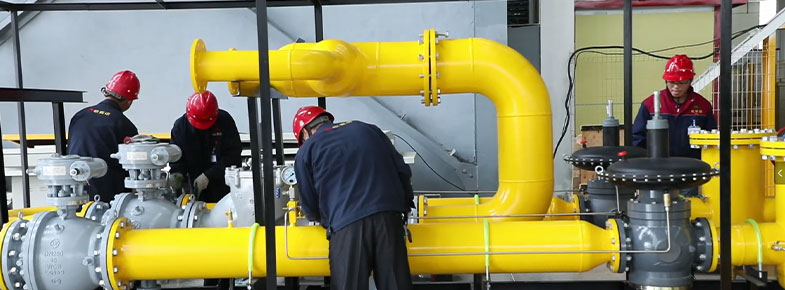
Oct . 10, 2024 09:08
Back to list
قياس الغاز
Measuring Gas Techniques and Importance
In the ever-evolving world of science, measuring gas is a fundamental task that plays a crucial role in numerous fields, including environmental monitoring, industrial applications, and research. Understanding the techniques used for gas measurement is essential for ensuring safety, efficiency, and environmental compliance.
Importance of Measuring Gas
Gas measurement is vital in several sectors. In industry, precise gas measurement can enhance process efficiency, ensure product quality, and maintain safety standards. For example, in the petrochemical industry, accurately measuring the concentration of gases like methane or carbon dioxide can improve the yield of chemical reactions and minimize waste.
In the environmental sector, measuring gases such as carbon dioxide, sulfur dioxide, and nitrogen oxides is critical for air quality assessment and climate change studies. These measurements help researchers understand pollution sources, their impact on human health, and the overall climate. Accurate gas measurement can also inform policymakers in developing regulations to improve air quality.
In the health sector, the measurement of gases is crucial in various applications, including medical diagnostics and anesthesia. Monitoring the concentration of anesthetic gases during surgeries ensures patient safety and optimal drug delivery.
Techniques for Measuring Gas
.
1. Gas Chromatography (GC) This technique separates and analyzes compounds in a gas mixture. It is often used in laboratories to measure specific gases at very low concentrations. GC provides accurate and reliable data, making it a standard method for gas analysis.
قياس الغاز

2. Infrared Spectroscopy This method involves measuring the absorption of infrared light by gas molecules. Different gases absorb light at specific wavelengths, allowing for identification and quantification. Infrared spectroscopy is widely used for measuring greenhouse gases and other environmentally relevant gases.
3. Mass Spectrometry This advanced technique measures the mass-to-charge ratio of ionized particles. Mass spectrometry can provide detailed information about the composition of gas mixtures and is particularly useful for detecting trace gases in various environments.
4. Electrochemical Sensors These are useful for measuring specific gases, such as carbon monoxide or ozone, based on their chemical reactions. They are often used in portable air quality monitors and industrial safety systems due to their relatively low cost and ease of use.
5. Optical Gas Imaging (OGI) OGI uses thermal imaging technology to visualize gas emissions. This method allows for the detection of gas leaks in real time, making it invaluable for maintaining safety in industrial settings.
Challenges in Gas Measurement
Despite the advancements in gas measurement technologies, challenges remain. One major issue is the varying conditions under which gases are measured, such as temperature, pressure, and humidity. These factors can affect the accuracy of measurements, necessitating calibration and correction methods.
Additionally, the presence of interfering substances can complicate gas measurements. For example, in complex industrial environments, multiple gases may be present, which can skew results if not accounted for properly.
Conclusion
In conclusion, measuring gas is a critical activity that impacts various sectors, from industry to environmental science. By employing advanced techniques such as gas chromatography, infrared spectroscopy, and mass spectrometry, scientists and engineers can obtain accurate data that inform crucial decisions. While challenges exist in the field of gas measurement, ongoing research and technological advancements continue to improve our ability to monitor and analyze gases effectively. As we strive toward a more sustainable future, the importance of precise gas measurement will only grow, underscoring its role in protecting both human health and the environment.
Latest news
-
Safety Valve Spring-Loaded Design Overpressure ProtectionNewsJul.25,2025
-
Precision Voltage Regulator AC5 Accuracy Grade PerformanceNewsJul.25,2025
-
Natural Gas Pressure Regulating Skid Industrial Pipeline ApplicationsNewsJul.25,2025
-
Natural Gas Filter Stainless Steel Mesh Element DesignNewsJul.25,2025
-
Gas Pressure Regulator Valve Direct-Acting Spring-Loaded DesignNewsJul.25,2025
-
Decompression Equipment Multi-Stage Heat Exchange System DesignNewsJul.25,2025

